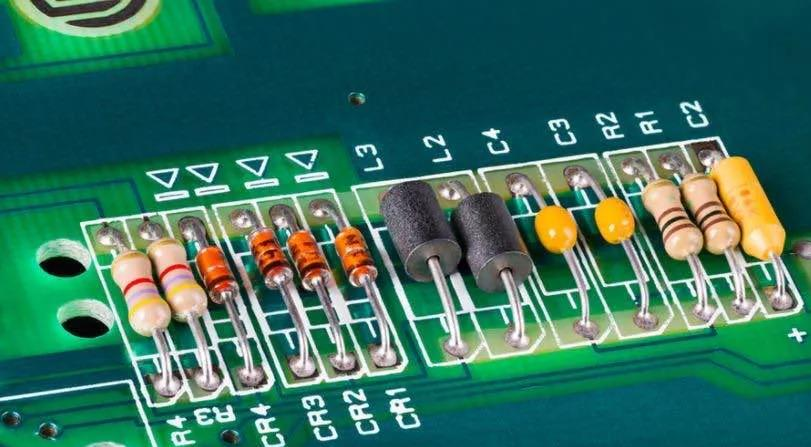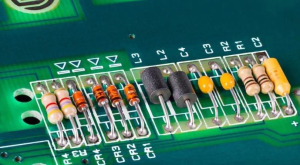
A Resistance Circuit, in its most basic sense, is any electrical circuit that contains resistive elements designed to control the flow of current. These resistive elements can take the form of discrete resistors, resistive traces on PCBs, or even natural resistance in wires.
Current Control: By opposing the flow of electrons, the Resistance Circuit ensures that other components operate within safe limits.
Voltage Division: A Resistance Circuit can be configured to create voltage dividers, useful for sensors and signal conditioning.
Energy Dissipation: Electrical energy is converted to heat in resistive elements, which is both a limitation and a purposeful feature in applications like heaters.
Integration in PCBs: Modern PCBs often integrate resistors directly into their structure. This eliminates bulk and improves reliability.
What fascinates me about the Resistance Circuit is its dual role: it is both a protector and an enabler. Without it, fragile transistors and integrated circuits would be exposed to uncontrolled electrical energy. With it, systems operate harmoniously, like a symphony of electrons moving in balance.
Modern electronics is an extraordinary blend of fundamental principles and sophisticated engineering, but at its heart lies the humble resistance circuit. While it may seem simple, the Resistance Circuit provides a foundation upon which everything from handheld gadgets to industrial machines operates. To truly understand how modern electronics evolved, one must first demystify what a Resistance Circuit is, how it functions, and why its role continues to grow in relevance despite the emergence of complex integrated systems.
This article explores the essence of the Resistance Circuit, highlights its advantages, introduces its applications in today’s world, and reflects on its future. Along the way, I will also add my own perspective as someone who views electronics not just as a technical field, but as a discipline that mirrors human creativity and problem-solving.

Resistance Circuit
The concept of the Resistance Circuit dates back to the earliest experiments in electricity. When Ohm formulated his now-famous Ohm’s Law—expressing the relationship between voltage, current, and resistance—he unknowingly gave birth to a framework that engineers still use today.
In the 19th century, simple batteries, copper wires, and resistive elements like carbon rods formed the earliest Resistance Circuit arrangements. These crude setups helped scientists understand how electrical energy could be controlled. The Resistance-Circuit was more than a laboratory curiosity; it became a guiding principle for safely distributing electricity in households and industries.
Fast-forward to today, and the Resistance Circuit is no longer isolated to wires and discrete resistors. Instead, it is embedded into printed circuit boards (PCBs), microchips, and hybrid electronic systems. This evolution reflects a broader theme in engineering: the simplest ideas often form the most indispensable tools.
In the design of today’s electronics, a Resistance-Circuit is often invisible to the casual observer. The sleek smartphone in one’s hand hides hundreds of resistive paths, each carefully designed to regulate current, divide voltage, and protect sensitive components.
For instance, when an LED in a smartphone screen lights up, a Resistance-Circuit ensures it receives the right amount of current—too little and the light will not glow properly, too much and the LED may burn out. Similarly, microcontrollers rely on Resistance-Circuit elements for biasing and stabilization.
My personal reflection here is that many young engineers focus too quickly on the glamour of high-frequency circuits or AI hardware acceleration, forgetting that these systems are impossible without resistive networks. I see the Resistance-Circuit as a silent backbone: rarely celebrated, but always working in the shadows to keep innovation alive.
The advantages of incorporating a Resistance Circuit into electronic designs are numerous. Below are some of the most significant benefits:
Simplicity and Predictability: Resistance Circuit principles are easy to calculate using Ohm’s Law, making them predictable and reliable.
Cost-Effectiveness: Resistors are among the cheapest electronic components, and integrating Resistance Circuit functions into PCBs keeps manufacturing costs low.
Versatility: A Resistance Circuit can be applied in almost any domain—power supplies, signal conditioning, communication devices, automotive systems, and beyond.
Protection: Sensitive electronics require defense against surges, overcurrent, and noise. A Resistance Circuit provides a first line of protection.
Scalability: Whether in a large industrial setup or a tiny wearable device, the Resistance Circuit scales elegantly without changing its basic function.
From my point of view, the greatest advantage of the Resistance Circuit is its universality. It embodies the idea that even the simplest mechanism can yield boundless applications. Modern engineering often glorifies complexity, but it is simplicity—like that of the Resistance Circuit—that sustains innovation over decades.
The use of a Resistance Circuit in consumer electronics is so pervasive that most people unknowingly interact with it dozens of times per day. Whether turning on a television, charging a smartphone, or listening to music through headphones, the Resistance Circuit plays a hidden yet crucial role.
Smartphones and Tablets: In display backlighting, a Resistance Circuit ensures consistent current for LEDs. In audio circuits, resistors help match impedance between devices.
Laptops and PCs: Voltage regulation relies on resistive dividers, while thermal management circuits depend on resistive sensors.
Wearables: Smartwatches use Resistance Circuit designs to achieve compactness and low power consumption while maintaining accuracy in sensors.
From my perspective, the most fascinating part is how a Resistance Circuit has adapted to miniaturization. Instead of being bulky discrete resistors, today’s circuits rely on thin-film and embedded resistors that occupy almost no visible space, yet perform with precision.
Industrial systems, such as robotics and power distribution units, rely heavily on the Resistance Circuit to regulate and protect their operations. Similarly, in automotive electronics, Resistance Circuit principles appear in engine control units, infotainment systems, and even safety-critical systems such as airbag deployment.
Automotive Control Units: A Resistance-Circuit stabilizes sensor signals before they are processed by the ECU.
Battery Management Systems: Resistance Circuit configurations monitor current and voltage for electric vehicle safety.
Motor Control: Resistors in feedback loops help regulate motor speed and prevent surges.
In my opinion, one underappreciated fact is that a Resistance-Circuit not only keeps systems safe but also ensures user comfort. For instance, in electric vehicles, the smooth acceleration we enjoy is partially due to controlled resistive feedback managing motor currents.
One of the inherent challenges of a Resistance Circuit is heat. By definition, resistors dissipate energy in the form of heat, which can be both useful and problematic.
Useful Heat: Heating elements in toasters or electric heaters are simply resistance wires converting electrical energy into warmth.
Problematic Heat: In high-density PCBs, heat from resistors can damage nearby components or reduce system lifespan.
This challenge highlights the importance of advanced PCB design and material selection. Choosing such specialized PCB solutions allows engineers to incorporate Resistance Circuit functions without compromising reliability.
Beyond power regulation, a Resistance Circuit plays an essential role in signal processing.
Filters: When combined with capacitors or inductors, a Resistance Circuit creates low-pass, high-pass, or band-pass filters, enabling clean signal transmission.
Impedance Matching: Communication systems require precise matching of impedance; resistors fine-tune this balance.
Noise Reduction: Resistance Circuit elements help dampen unwanted oscillations, ensuring clarity in wireless or wired communication.
As I see it, the artistry of electronics design is most evident here: a Resistance Circuit does not merely regulate; it shapes how information travels and how humans experience it—whether through crisp audio, clear video, or stable data transmission.
Electronics cannot be deployed without reliability testing, and the Resistance Circuit plays a role here as well.
Load Simulation: Precision resistors simulate loads to test power supplies and amplifiers.
Burn-in Testing: Resistance-Circuits are used to apply controlled stress, ensuring systems can withstand long-term operation.
Failure Analysis: Measuring resistance changes over time reveals material degradation.
From my own observation, I believe that Resistance-Circuit reliability is often underestimated. A tiny drift in resistance may not seem critical, but in high-precision systems like aerospace electronics, it can mean the difference between success and catastrophic failure.
Even as digital systems dominate, analog interfaces remain essential. Here, the Resistance-Circuit plays a critical role:
Analog-to-Digital Converters (ADC): Voltage dividers prepare input signals for digital sampling.
Biasing of Transistors: Resistance Circuits stabilize operating points.
Pull-up and Pull-down Networks: In digital logic, resistors ensure defined states when no active signal is present.
In my reflection, the Resistance Circuit acts like a translator between the analog and digital worlds. It ensures smooth communication, much like a bridge between two languages. Without it, digital circuits would misinterpret signals, leading to instability.
The performance of a Resistance-Circuit depends heavily on the materials used:
Carbon Composition: Cheap, but less stable.
Metal Film: High accuracy and low noise.
Wire-Wound: High power handling, often used in industrial setups.
Thin-Film Integrated Resistors: Embedded directly into PCBs for compact designs.
Material science continues to push the boundaries of what a Resistance Circuit can achieve. In the future, nano-materials may allow resistors with adaptive properties—changing resistance dynamically in response to environmental factors.
The Resistance-Circuit may look deceptively simple, yet it is one of the most essential building blocks in electronics. From the earliest experiments of Ohm to today’s advanced PCBs and integrated circuits, the Resistance Circuit has remained a constant, guiding engineers in controlling current, dividing voltage, protecting sensitive components, and enabling signal processing.
Foundational Role: Every modern electronic system—from smartphones to industrial robots—relies on the Resistance Circuit to regulate energy flow.
Advantages: Simplicity, predictability, cost-effectiveness, and universality make the Resistance Circuit indispensable.
Applications: Found in consumer electronics, automotive systems, sensors, signal processing, and even reliability testing.
Challenges: Heat dissipation, tolerance, and aging require careful design and optimization.
Future Trends: Flexible electronics, embedded resistors, nano-materials, and eco-friendly design will redefine the Resistance Circuit’s role.
Education and Research: The Resistance Circuit remains a key teaching tool, a research instrument, and a platform for innovation.
Rolled copper foil is produced by mechanically rolling copper into thin sheets, offering better surface quality and mechanical strength. Electrolytic copper foil is deposited via an electrolytic process, making it more flexible and cost-effective.
A Resistance Circuit in PCB design ensures current limiting, voltage division, and signal stability. Without it, components would be exposed to unsafe electrical conditions, leading to potential failure.
Carbon composition: Low cost but less precise.
Metal film: High precision and low noise.
Wire-wound: High power handling.
Thin-film embedded resistors: Integrated into PCBs for compact designs.
A Resistance Circuit protects devices by limiting current surges, absorbing excess energy as heat, and providing stable bias conditions. This prevents fragile semiconductors from damage.
JM PCB provides advanced PCB manufacturing where resistors can be surface-mounted or embedded into the substrate. Their expertise in thermal management and reliability testing ensures Resistance Circuit performance in demanding applications such as automotive, aerospace, and medical electronics.
Connect to a Jerico Multilayer PCB engineer to support your project!
Request A Quote